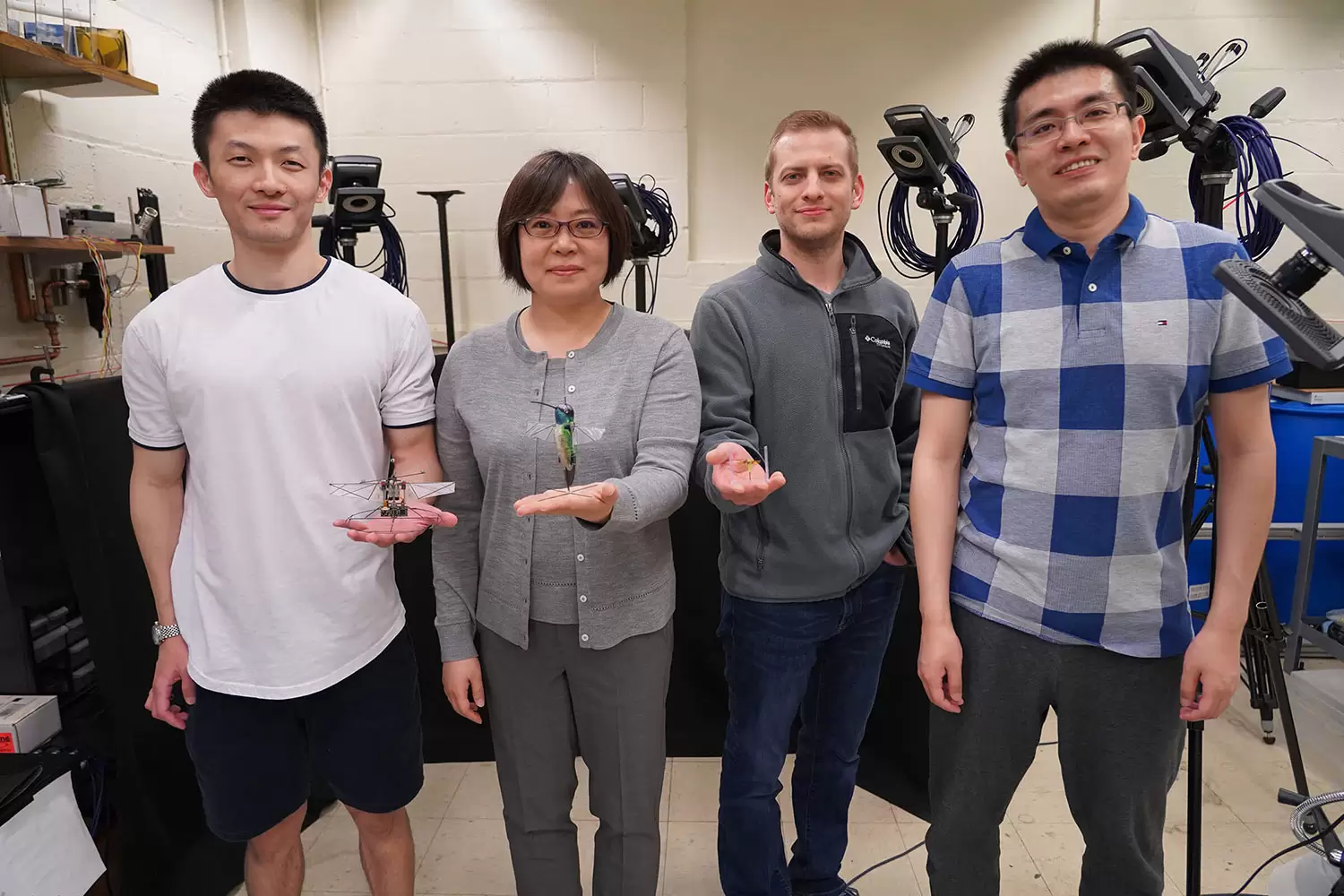Engineers have looked to hummingbirds to create a winged robot that uses AI to go where humans and drones can’t.
According to researcher Xinyan Deng, an associate professor of mechanical engineering at Purdue University in the US, hummingbirds combine the flight advantages of birds and insects.
They actively move their wings, like other birds, but are also able to hover like insects and execute impressive aerial maneuvers – including lightning-fast 180º turns to escape threats.
Because of the unique way a hummingbird flies, a robot that mimics its motion can be scaled down to a smaller size than drones with more conventional aerodynamic properties.
“The physics is simply different; the aerodynamics is inherently unsteady, with high angles of attack and high lift. This makes it possible for smaller, flying animals to exist and also possible for us to scale down flapping-wing robots,” Deng said in a statement.
These small, super-manoeuvrable flying robots could be put to use in search and rescue operations in confined spaces, such as collapsed buildings, she added.

Cracking the code
Deng said the first challenge was to decode the underlying aerodynamic principles of hummingbird flight. This included working out how they generate lift and what sort of kinematic controls were needed for the robot.
While hummingbird robots have been built in the past, Deng’s team produced prototypes that were smaller, lighter and able to move like a hummingbird without an operator controlling their every move. Deng said the researchers combined non-linear control with AI and reinforcement learning to train the robot to behave like a hummingbird in flight.
“The control algorithm has to be robust and adaptive, so if you have wind gusts or external disturbances, or bump into the wall, you can deal with that,” she explained.
The researchers also designed an open-source simulation tool for flapping wing robots.
Deng’s bio-inspired robot was 12 g with a wingspan of just under 17 cm – around the same size as a hummingbird but slightly heavier than the real thing.
The team also built an insect-sized robot that weighed less than 1 g with a wingspan of under 4 cm. This robot beats its wings four times faster than the larger hummingbird model.
“The smaller you get, the higher the wing beat frequency,” Deng explained.
Importantly, the robots generate much more lift than they need to keep their own weight in flight. While the robots are currently tethered to a power source, their high lift allows “wiggle room” to add batteries and sensors to make them more mobile. For example, the 12 g hummingbird robot can generate up to 27 g of lift.
Sensing without sight
Another capability the researchers investigated was birds’ ability to use their wings to sense their environment through variations in airflow and aerodynamic forces.
According to the researchers, there has not been a great deal of research into how flapping wing robots can use their wings in a similar way to aid navigation through complex environments.
In their hummingbird robot, Deng’s team found the electrical current in the motors driving the wings was affected by its closeness to the ground. This could be measured to help it control its altitude.
To find walls, the researchers allowed the wings to bump into them, which was possible to do safely thanks to the flexible and resilient nature of the wings’ structure. Depending on whether both or just one wing hit the wall and at what point in their motion, these movements could be used to help the robot determine where it is.
According to Deng, the ability of the hummingbird robot to map its surroundings without visual imaging could help robots find survivors in dark places.
“And it means one less sensor to add when we do give the robot the ability to see,” she added.
